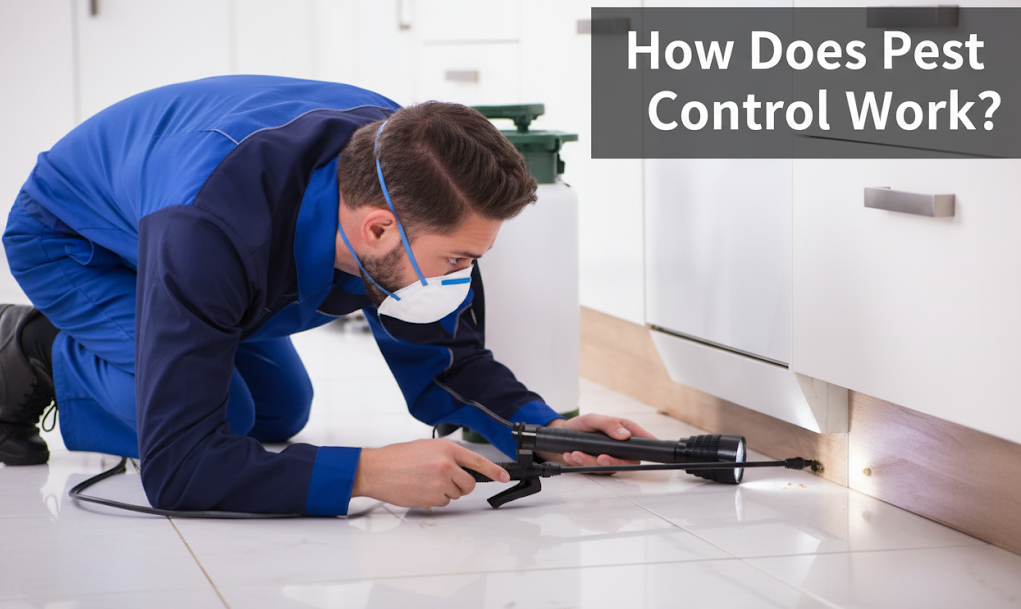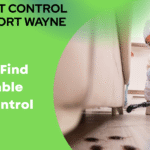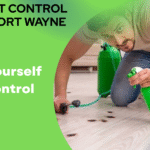Pest control is a critical service for homeowners and businesses alike, ensuring that your environment remains safe, healthy, and free from unwanted pests. Whether you’re dealing with rodents, insects, or other troublesome invaders, understanding how pest control works can help you make informed decisions when it comes to choosing the right methods for your needs.
In this article, we will dive into the various ways pest control works, from chemical solutions to eco-friendly alternatives, as well as step-by-step processes, benefits, and expert advice. Let’s explore how professionals help manage pest issues effectively and sustainably.
What Is Pest Control?
Pest control refers to the management and regulation of pest species that may be harmful to human health, the environment, or property. It involves using various strategies to eliminate or reduce the population of pests, preventing further infestations and minimizing the risks associated with them.
The primary goals of pest control are:
-
Elimination of existing pests
-
Prevention of future infestations
-
Management of pest populations to reduce long-term damage
Whether it’s a one-time treatment or ongoing maintenance, pest control aims to restore comfort and health to your living or working spaces.
Types of Pest Control Methods
Pest control professionals employ several methods to tackle pest problems, each suited for specific situations. These approaches include chemical, biological, physical, mechanical, and cultural control, depending on the pest and the severity of the infestation.
1. Chemical Control
Chemical control is one of the most widely known forms of pest control. It involves using synthetic or natural chemicals (pesticides) to kill or repel pests. The treatment may involve spraying, fogging, or baiting, depending on the type of pest.
Advantages:
-
Highly effective at quickly eliminating pests
-
Targeted treatments that focus on specific pests
-
Widely accessible
Disadvantages:
-
Potential risks to human health and the environment if misused
-
Requires professional expertise to handle safely
-
Pests can develop resistance over time
2. Biological Control
Biological control uses natural predators, parasites, or pathogens to control pest populations. For example, releasing ladybugs to eat aphids or introducing a parasite that targets certain pests.
Advantages:
-
Environmentally friendly and sustainable
-
Reduces the use of chemicals
-
Long-term solution for certain pests
Disadvantages:
-
Not effective for all pests
-
Requires careful planning and control
-
Takes time to see results
3. Physical Control
Physical pest control involves using barriers, traps, or other physical means to prevent or eliminate pests. For instance, installing mesh screens to prevent mosquitoes or using traps to catch rodents.
Advantages:
-
Non-toxic and eco-friendly
-
Immediate results in some cases
-
Can be done by homeowners without professional help
Disadvantages:
-
Limited effectiveness for large infestations
-
Requires consistent monitoring and maintenance
-
May not be suitable for all types of pests
4. Mechanical Control
Mechanical control methods use physical tools and equipment to remove pests, such as vacuums, mechanical traps, or rotating plant beds to deter insect breeding.
Advantages:
-
Very low environmental impact
-
Can be highly effective in specific situations
-
Simple to implement
Disadvantages:
-
Not always effective for all types of pests
-
Requires manual labor and continuous effort
-
Often requires multiple approaches
5. Cultural Control
Cultural control refers to altering the environment or habits in a way that makes it less hospitable to pests. This could mean maintaining proper sanitation, changing planting strategies, or removing standing water to eliminate breeding grounds.
Advantages:
-
Long-term prevention strategy
-
Works well in gardens and agricultural settings
-
Low cost and minimal environmental impact
Disadvantages:
-
Not always practical for all types of pests
-
May take time to see results
-
Requires significant lifestyle or environmental changes
How Pest Control Works Step-by-Step
When you hire a pest control professional, the process typically follows a few structured steps to ensure effective treatment and long-term prevention.
Step 1: Inspection and Assessment
The first step involves a detailed inspection of the property to identify signs of pest activity. This includes checking for droppings, nests, damage, or actual sightings of pests. Professionals also assess the environment for potential entry points or conditions that attract pests.
Step 2: Identifying the Right Treatment
After identifying the pest species, the next step is determining the most effective treatment. For example, rodents may require traps and exclusion methods, while ants or termites may need chemical baits or sprays. The treatment plan will be tailored to the pest problem at hand.
Step 3: Treatment Implementation
Once the treatment plan is in place, the professional pest control technician will apply the necessary treatments, whether it’s a pesticide application, traps, or other methods. The focus is on targeting the root cause of the infestation.
Step 4: Follow-Up Treatments and Prevention
Follow-up visits may be necessary to ensure that the pests have been fully eradicated and to prevent future infestations. Pest control professionals may also provide tips for sealing entry points or modifying the environment to make it less attractive to pests.
What Are the Benefits of Pest Control?
Pest control provides numerous benefits to homeowners and businesses, including:
-
Health Protection: Pest control helps eliminate disease-carrying pests like rodents, mosquitoes, and cockroaches, reducing the risk of illnesses like Lyme disease, West Nile virus, and salmonella.
-
Property Protection: Pests can cause significant damage to your property, including termite damage to wood, rodents chewing on wires, or insects destroying crops or furniture. Effective pest control prevents this.
-
Peace of Mind: Regular pest control services ensure you don’t have to worry about pests invading your living space, allowing for a comfortable and safe environment.
Is Professional Pest Control Necessary?
While DIY methods may work in some cases, professional pest control is often the most effective way to handle serious infestations. Professionals bring years of expertise, access to stronger treatments, and the ability to identify and treat the problem quickly.
Common Pests Treated by Pest Control
-
Rodents: Rats and mice can cause significant damage and carry diseases.
-
Insects: Ants, cockroaches, termites, and bed bugs are common pests.
-
Seasonal Pests: Wasps, mosquitoes, and fleas are problematic during warmer months.
-
Other Pests: Fleas, ticks, and even spiders can require pest control.
Eco-Friendly Pest Control Options
As people become more conscious about the environment, eco-friendly pest control methods have gained popularity. Organic pesticides, traps, and biological control methods offer an effective and safer way to handle pests without harming the environment.
Conclusion
Understanding how pest control works can help you make better decisions when it comes to keeping your home or business pest-free. Whether you choose DIY methods or hire a professional, pest control plays an essential role in maintaining a safe and healthy environment. Regular treatments and prevention are key to long-term pest-free living.







